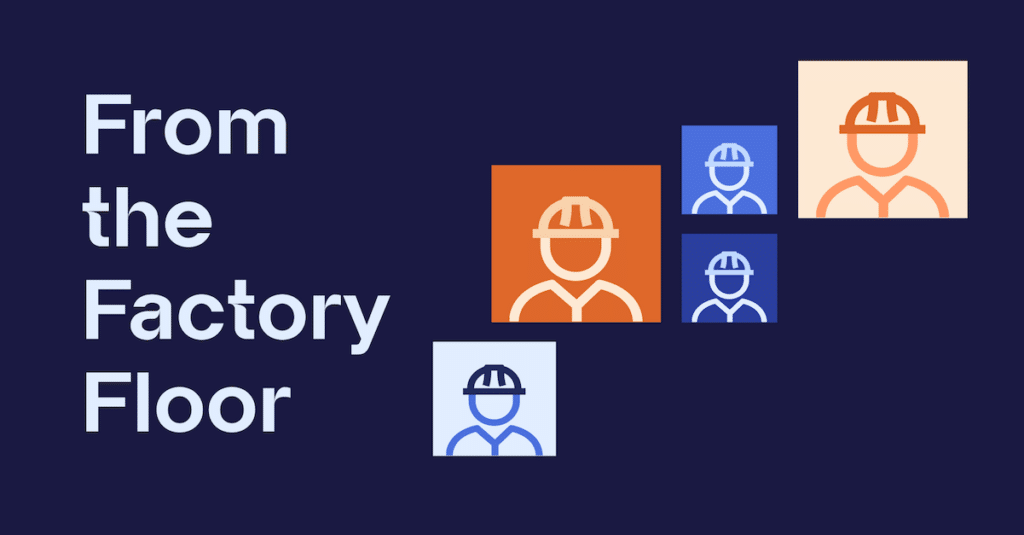
Recently, a Fortune 100 consumer packaged goods company adopted Augury — but it almost didn’t happen. Key stakeholders in the back office didn’t understand the value of predictive maintenance (PdM) or where the purchase would fit within their budget. It seemed risky. How could a new technology — a new recurring expense — increase the competitive position of their firm, save money, and benefit their respective departments? So how do you reassure every0ne and get them on board for the journey?
Today most Fortune 500 companies have Digital Transformation initiatives and their operations and maintenance teams are starting to leverage real-time analytics and artificial intelligence to protect their production assets. Reliability engineers and maintenance technicians intuitively grasp the power of predictive maintenance. They are on the ground solving complex machine problems and ensuring asset performance. They understand that implementing a PdM solution expands their powers and saves the organization money.
Back office teams don’t live and breathe the technology the way shop floor teams do. As a back office leader, sometimes you need to put yourself in the shoes of the user or team who will benefit from a new technology investment to understand it more completely.
Since implementation, this specific Fortune 100 CPG company has become an evangelist for the IIoT. They are expanding their PdM program — using their cost savings — and their facilities teams are benefitting from more reliable and predictable operations.
Back Office Priorities
New technology purchases often have the potential to be a disruptor. In many cases the solution will require business model changes and budget line items that may have never existed before. Back office stakeholders need solid proof of ROI and case studies to justify and approve these new purchases.
It can be a time-consuming process for teams to decide where the solution fits into the organizational plan and how to get the budget for project approval. It’s necessary, therefore, that key stakeholders in the finance, legal, and procurement departments understand the intrinsic value of PdM.
The Finance Team
Educating the finance team often involves focusing on the benefits of a PdM solution. For example, PdM can deliver more predictable budgets and expense planning. It also creates more predictable revenue as it reduces unplanned machine downtime along with the costs associated.
By treating maintenance as an operating cost, PdM gives finance departments the ability to spread their budgets evenly throughout the year, making it easier to manage cash flow. The finance department also benefits from lower overall maintenance expenses, fewer faulty products, less waste, and less need to maintain spare parts inventory.
The Legal Team
The process of negotiating and signing an agreement with enterprises can be challenging, but for new service types, it is much more complicated. If the company’s agreement templates don’t already support the new service type, it will always take longer to finalize. But legal teams can benefit from encouraging digital transformation specifically by implementing a complete PdM solution.
Production lines that operate with predictive maintenance can warn of failures before they occur, greatly decreasing the risk of workplace injuries because of critical asset failures. Add this to the fact that facilities with PdM are “healthier” and should be operating in optimal conditions, which aids in quality control preventing production inconsistencies.
Yearly subscription based terms and billing cycles for PdM modernize enterprise operations. These terms allow legal teams to operate smoothly by using terms that they are already accustomed to— similar to their other SaaS products.
The Procurement Team
Procurement teams are very familiar with SaaS models because they allocate budget to them frequently in software solutions like ERP, CRM, etc. As of today, procurement teams are familiar with purchasing maintenance as a service through consultants, so they are already accustomed to treating maintenance as a variable expense.
PdM allows procurement teams to better estimate the ROI of the machines they purchase by giving them power to negotiate lower service costs as well as reduced insurance annual contracts.
The back office has your back
Initially, back office stakeholders may not understand how complete PdM solutions provide long-term value for their organization. But when the back office is presented with solid ROI studies and materials that show how the technology would benefit users, they can be an ally as opposed to a blocker and improve the overall state of the enterprise.
See how Augury can help with your digital transformation goals.






